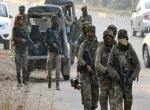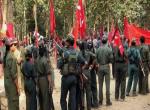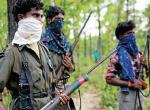The massacre of 37 innocent personnel of the Security Forces (SF) of Government of India and the State Government, on 3rd April in Chhattisgarh, has led to widespread condemnation, even from the Prime Minister. Such mass killing of SF invites serious discussions and debates, as in the past, to be followed by special operations with additional force mobilisation and even technological integration. While suggestions and expert views are aplenty, learning from good practice models would be the best method. Incidentally, many of these good practice models are not documented, as critics are more interested in the wrong doing by the SF, which, no doubt, shall be condemned and abhorred; nevertheless, good practices deserve equal attention, more so as models.
The Lalgarh Story: During the end of 2008, the then Chief Minister of West Bengal and the Union Minister were returning after the foundation stone laying for a corporate industry to be set up in the Jungle Mahal forest area. The masses were of the firm opinion that this would displace them and destroy even their livelihood. Therefore, there was a strong resentment. Yet the ministers went ahead with the programme. While returning, a serious blast caused calamity to the escort party, whereas both the ministers escaped by the skin of their teeth. Seeing blood of their kin, police went on a rampage. As the villagers say, neither women old nor children were spared from police brutality. Every villager was a sufferer, which made them create an association in common cause, PCPA (Public Committee against Police Atrocities). The Maoists, waiting in their wings in the adjoining Jharkhand and Odisha, were quick to lend support. This became a mass movement. They started mobilising weapons and killing those local leaders whom they perceived to be the exploiters of poor. This included personnel from the different outfits of the West Bengal Police and several local leaders of the then ruling party. More than 100 civilians were killed, one after another. Police also lost several brave, innocent men. Kishenji and Lalmohan, self-styled leaders emerged, because there was complete vacuum in the political sphere. Lack of development compelled the masses; most of them struggling to survive in abject poverty, to support the cause. The developmental vacuum was thus usurped to their advantage by the Maoists along with the PCPA. The security vacuum stood out as the biggest calamity. The complete standoff between the police and the masses was obvious from the fact that the Maoists chased away all government entities, even burnt down the Block Office and the Police Station, declaring the entire area as ‘liberated.’ During the parliament election in April 2009, the Maoists had boycotted the election and, therefore, nobody voted. The entire political space was also under Maoists control. By this time, Kishenji had assumed a larger than life image with media publicity galore, challenging the Security Forces to arrest him. Despite several operations by the police, including CRPF, he remained at large. No intelligence was forthcoming either.
Turn Around: By mid 2009, Government of India took a decision to retrieve the ‘lost land’. After careful analysis along with CRPF officials, MHA decided to launch the operation. Meticulous planning was done by CRPF, the Nodal agency, along with State Police. It was a comprehensive plan to address all the three vacuums viz. Security, Development and Political, the former two, to go hand-in-hand. The philosophy was CSDC that is Capture, Sustain, Develop and Consolidate. The CSDC plan was a classical strategic model which is not in the ken of many, except those who were part of the mission. The complete reclamation of the ‘lost’ land, by mid 2009 is a classical piece of brilliant security operations, with minimal loss to central security forces and even civilians. The Central Forces along with elements of the State Force, ably led by the field officers of CRPF and WB Police, made a tremendous contribution in reclaiming the lost land in a matter of one month. The forces adopted a “community’’ approach as against the usual “operational’’ approach, winning the support of the silent masses. With the Force personnel saluting and respecting the elderly, to cite an example of humility, the public found a different type of police, locally acclaimed as the Hindustani Fouz.
Winning the Masses: The SF besides strategic movement into the lost terrain which was all forests and jungles interspersed with villages also undertook a magnificent relief work. Starting with mid day meal for children, running classes for them in the local language, looking after the elderly by reaching out the essentials to them, the SF embarked on a multitude of activities, winning the hearts and minds of the villagers. The respect extended to the children, elderly and weaker sections endeared them so well that intelligence started pouring up from the ground. While the high level intelligence agencies could not penetrate the ground, the SF could get across hard intelligence. Intelligence has to come from below and not from top. And the local man holds the intelligence. It is a question of reaching out to him. The techint developed on the ground by the District Police gave further impetus. This led to precise surgical strikes by the CRPF, along with the State Police. CoBRA with local language speaking personnel, proved its worth. The death of Kishenji in a surgical strike, with no loss to anybody else on either side, was a fine piece of professional operation. This encounter was the last nail on the coffin. The Maoists withered away.
Conjointly, the SF walked the talk with the District Collector in ensuring development and relief work on a fast track. Rural employment schemes picked up so fast that the masses turned to work and earn. No wonder, Maoists lost their supporters. Comprehensive development on a fast track helped to bridge the developmental vacuum. When both the security vacuum and the developmental vacuum were bridged, the political leaders started making careful inroads. To cite an example, when a person was murdered in the heartland of Lalgarh, the leader of the opposition (who later became the Chief Minister) dared to enter the unchartered territory and organise a condolence meeting. The purpose was to expose the ruling party. But this political address became a game changer. Public became politically charged. Such initiatives by the other parties followed, which effectively filled up the political vacuum. The proof of pudding was that in the 2011 assembly election, more than 80% of the people voted, whereas there was nil voting in the parliament election of 2009, when the same place had remained “liberated’’ by the Maoists. Here is a classic case of reclaiming the lost land without blood and bullet. Indeed a war won with minds and hearts of the people. The strategy of combined action to strengthen all the three required elements, viz. Security, Development and Political worked well and in a short time of five years, Maoists withered away.
Every terrain has its own issues and, therefore, the problems as well as the solutions would be different. However, Lalgarh model spearheaded by CRPF during 2008-2013 is a classic piece of internal security operation, which goes to prove how comprehensive action on the security, development and political, could address such a complicated issue of national security. Had the Lalgarh matter been left only to police action, perhaps the issues would have become aggravated and continued even now. This would have caused much blood trail, with loss of several innocent lives on both sides. Internal Security issues which are closely linked to developmental issues cannot be wished away by military style combats and weapons. What is required is a planned strategy, involving the masses and not by alienating them. They hold the fort and they are the real heroes. It will be a blunder, if anybody treats them as enemies and tries to usurp their territory.
There is a fourth dimension too in the Lalgarh story. The infamous Jnaneshwari Express blast, of 28th May 2010, engineered by the Maoists had killed more than 148 and injured more than 200. The investigation was done in the best professional manner by a Smart Team of CBI sleuths. The CoBRA of CRPF was on duty with the CBI for operations, assisting in investigation. Several top Maoists, who were accused were arrested and prosecuted. CoBRA could have ‘shown’ ‘encounters’ and killed those arrested, but they did not. Arrest, detention and incarceration were a shame to the Maoists, as they would rather die but not be detained by police! The invincible image of the Maoists collapsed and the so called followers started deserting them. Leader without led is only a paper tiger. Law has to be enforced not by bullets, but by Rule of Law. It will be travesty of law if people are shown as killed in ‘encounters’. As Gandhiji said, it will only lead to more violence. Indeed, Rule of Law is more powerful than bayonet and bullets. In many respects, the Largarh ‘experiment’ remains a classical piece of resolute action against Maoists. Lessons to be learnt are aplenty for actions elsewhere. One only needs to keep ears to ground.
(The paper is the author’s individual scholastic articulation. The author certifies that the article/paper is original in content, unpublished and it has not been submitted for publication/web upload elsewhere, and that the facts and figures quoted are duly referenced, as needed, and are believed to be correct). (The paper does not necessarily represent the organisational stance... More >>
Image Source: https://openthemagazine.com/wp-content/uploads/2015/11/naxal-1.jpg











Post new comment